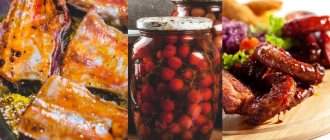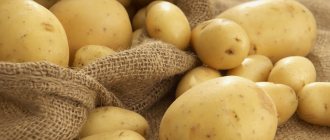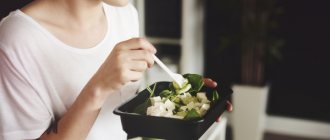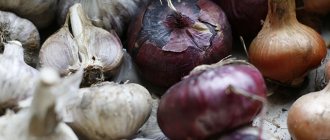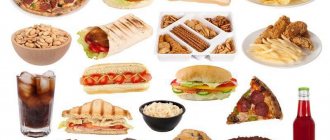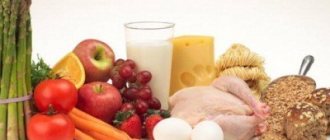Heart Diet No. 10: Do's and Don'ts?
Authorized products:
- Rosehip decoction, vegetable and fruit juices, compotes, coffee drinks, weak tea. Grape juice in limited quantities.
- Yesterday's baked wheat bread (first- or second-grade flour), sponge cakes and savory cookies, salt-free dietary bread.
- Vegetable oils, unsalted butter.
- Chicken, rabbit, pork, veal, lean beef. Jellied, boiled lean fish. It is necessary to limit the consumption of boiled sausages.
- One egg per day – added to a dish or soft-boiled.
- Various vegetarian soups with vegetables and cereals. A serving is approximately 250-400 grams.
- Vegetables raw, baked or boiled: cucumbers, lettuce, tomatoes, carrots, potatoes. Limited – green peas and white cabbage. You can add parsley, dill, and green onions to dishes.
- Curd dishes and cottage cheese, fermented milk drinks. If well tolerated, use milk.
- Candies without chocolate, jam, milk creams and jelly, mousses.
- Boiled pasta.
Prohibited:
- Puff pastry and pastry products, fresh bread.
- Strong mushroom, fish and meat broths.
- Fatty fish and meat. Kidneys, liver, goose, duck.
- Canned fish and meat, sausages, smoked meats, fatty and salty cheeses.
- Fried and hard-boiled eggs.
- Mushrooms, legumes.
- Pickled, pickled and salted vegetables.
- Garlic, onions, radishes, radishes, spinach, sorrel.
- Fruits containing coarse fiber.
- Cocoa, chocolate, natural coffee.
- Cooking and meat fats.
Diet No. 10a
If the patient is diagnosed with IIb or III degree of circulatory failure, diet No. 10a is used. In this case, diet therapy becomes as gentle as possible on the functioning of the digestive organs and cardiovascular system, because this condition is considered decompensated.
The list of products remains similar to the tenth diet. The patient is prohibited from eating fatty, canned, fried, baked goods and confectionery products, hot spices and salt, and meat by-products. Alcohol, soda, energy drinks, coffee and green tea should be completely excluded. Vegetables and fruits with coarse fiber and skin are limited.
It is advisable to wipe the cereals; they can be boiled with milk or water. Soups should be made with low-fat broth; it is advisable to cook them with vegetables or lean fish. It is recommended to reduce the amount of dried bread to 150 g. The daily calorie intake is reduced to 2000 kcal.
You should drink no more than a liter of water per day. Fluid restriction is caused by impaired functioning of the kidneys and liver in these stages of the disease. Diet number 10a lasts until the patient’s well-being improves and the disease regresses. Often table 10a goes into diet ten.
Diet menu No. 10 for one day
An approximate daily ration of diet table number ten could be as follows: first breakfast - oatmeal milk porridge, soft-boiled egg, tea. Second breakfast – apples with sugar (baked). Lunch – pearl barley soup with vegetables (about half a serving), dried fruit compote, carrot puree with boiled meat. During the afternoon snack, you can drink a rosehip decoction. Dinner – boiled potatoes with boiled fish, curd pudding (half portion), tea. Before going to bed, drink kefir. Salt is not used in cooking.
Menu for diet
It is important to ensure that the body is saturated with useful components and nutrients. A day you need to eat two to three servings of carbohydrate dishes (with a predominance of complex ones), two servings of protein foods, snacks with plant fiber (vegetables, berries, fruits) are allowed. Periodically you need to eat nuts and drink fermented milk drinks to avoid potassium deficiency. This macronutrient is extremely important for the heart; a potassium diet is often prescribed to prevent its deficiency.
It is better to write the diet on a piece of paper and place it in a visible place; it is advisable to eat at the same time. You can create a sample menu for the week in advance so that you don’t have to come up with dietary decisions on the fly.
First day
In the morning: pureed buckwheat with milk, a little dried apricots, herbal decoction.
Snack: peeled grated apple with carrots.
Lunch: steamed fish cutlets, mashed potatoes, unsweetened berry juice.
Afternoon snack: milk.
Dinner: stuffed peppers, tomato juice.
Second day
In the morning: cereal flakes with pieces of peeled pear, weak black tea.
Snack: kiwi puree.
Lunch: vegetable soup with pearl barley, toasted bread.
For an afternoon snack: a little cottage cheese, one tomato.
Dinner: vinaigrette without onions and beans, a piece of boiled beef, a glass of natural juice.
The third day
In the morning: one boiled egg in a bag, cucumber and tomato salad, linden tea.
Snack: unsweetened yogurt.
Lunch: boiled millet porridge with pieces of boiled veal, squash caviar.
For an afternoon snack: some nuts, rose hip decoction.
Dinner: baked fish, boiled cauliflower.
Fourth day
In the morning: liquid semolina porridge, a little honey or jam, unsweetened tea.
Snack: dried bread with cottage cheese.
Lunch: vegetarian beetroot soup, baked potatoes, fresh cucumber.
For afternoon snack: homemade oatmeal cookies, milk tea.
Dinner: stewed eggplant with rabbit meat, carrot juice.
Fifth day
In the morning: barley porridge, Greek salad without onions.
Snack: a glass of kefir, some berries.
Lunch: vegetarian borscht, broccoli puree, milk jelly.
For an afternoon snack: berry jelly, chamomile infusion.
Dinner: cottage cheese casserole, boiled beet and prune salad.
Sixth day
In the morning: pureed rice porridge, pieces of kiwi, tea with milk.
Snack: yesterday's rye bread, avocado slices and tomato.
Lunch: boiled beef stroganoff, side dish of boiled potatoes.
For an afternoon snack: a glass of fresh carrot and apple juice, walnuts.
Dinner: boiled squid fillet, green beans, milk.
Seventh day
In the morning: oatmeal with milk and honey, linden tea.
Snack: grated carrots with raisins, topped with a spoonful of unsweetened yogurt.
Lunch: fish stewed in tomato juice, boiled mashed rice.
For an afternoon snack: stewed pumpkin with flax and sunflower seeds.
Dinner: baked rabbit with prunes, a glass of fresh apple juice.
If you are intolerant to whole cow's milk, replace it with coconut, soy or almond milk.
You cannot starve on a diet; nutrition must fully satisfy the body's needs. Do not forget about counting the fluid; small deviations from the norm are not terrible, but for a speedy recovery it is better to follow the rules exactly.
Diet No. 10 for hypertension and other diseases can last as long as necessary to restore the patient’s health. Only a doctor can determine the exact duration of the program; as a rule, this technique is prescribed for several months or more.
Diet recipes No. 10
Boiled meat soufflé.
Ingredients: 5 ml sunflower oil, 1 egg, 5 g flour, 30 ml milk, 50 g boiled beef. Turn the meat through a meat grinder two or three times. Prepare a white sauce from dried flour and milk and, stirring thoroughly, add in small portions to the minced meat. Separate the egg white from the yolk. Add the yolk to the puree, add salt and stir. Beat the protein into a thick foam, gradually add it to the meat puree. Place the prepared mixture in a frying pan greased with vegetable oil and steam the soufflé. Before serving, pour oil over the dish.
Steamed meatloaf stuffed with omelette.
Ingredients: 5 ml vegetable oil, 10 ml milk, 1 egg, 20 ml water, 15 g wheat bread, 75 g beef. Rinse the beef and with bread soaked in water, pass through a meat grinder twice, stir thoroughly and beat. Spread the prepared mixture in a thin layer on a cloth moistened with water. Place a chilled omelette made from eggs and milk in the middle. Transfer the rolled roll from the cloth onto a baking sheet moistened with water and steam. Drizzle with vegetable oil before serving.
Boiled meat with vegetable stew.
Ingredients: 5 ml of vegetable oil, 85 ml of vegetable broth, 5 g of flour, 15 g of tomato, 20 g of green peas, 50 g of potatoes, 30 g of carrots, 5 g of parsley root, 10 g of onions, 50 g of boiled beef. Cut the beef into pieces. Finely chop the carrots, parsley root and onion and simmer in water with vegetable oil (a little water). Cut the potatoes into cubes, add finely chopped tomatoes, green peas, stewed vegetables and meat. Pour the sauce prepared from vegetable broth and dried flour, simmer the dish until cooked.
Author of the article:
Kuzmina Vera Valerievna |
Endocrinologist, nutritionist Education: Diploma of the Russian State Medical University named after. N.I. Pirogov, specialty “General Medicine” (2004). Residency at the Moscow State Medical and Dental University, diploma in Endocrinology (2006). Our authors
Diet No. 10b
Table No. 10 is often prescribed to patients after a myocardial infarction, as well as in the presence of rheumatic heart disease without circulatory failure. Compared to other diet options, diet No. 10 is broader and the drinking regime is not as strict. It is important for the patient to increase foods high in potassium and magnesium in their diet: nuts, cereals, milk. The menu must include protein foods, with a predominance of animal protein.
After a heart attack, the diet is prescribed in several stages. The diet consists of three phases, which are prescribed alternately:
- First phase. Lasts during the first week after myocardial infarction. The energy value is reduced to 1200 kcal; the patient is required to eat approximately 1.5 kg of food and 0.8 liters of liquid per day. Dishes are prepared in pureed, crushed form, and the food is taken warm. Salt is not used at all, you can periodically eat crackers from rye bread, fresh vegetables are prohibited.
- Second phase. It lasts for 2-3 weeks and is called the subacute period. Daily calorie content increases to 1800 kcal, liquids can be consumed in a volume of 1 liter. Up to 3 g of sodium chloride is allowed. You can introduce fresh vegetables, increase the amount of protein foods and healthy polyunsaturated fats.
- The third phase begins in the fourth week after the heart attack, during which scarring occurs. The menu at this stage will be complete, the amount of food should increase to 2.2 kg, and water - 1.1 liters. The permissible salt intake is 6 g per day. The list of products is typical for table number 10.
During the rehabilitation period after myocardial infarction, it is important to eat food low in salt; the main amount of sodium chloride will contain bread. It is important to adhere to this rule, because salt tends to retain fluid in the body and lead to edema, thereby further impairing the functioning of the damaged heart muscle. Meat and fish must be boiled before other types of cooking. It is allowed to fry foods in a small amount of vegetable oil. Porridges should be boiled and pureed. Vegetables can be eaten cooked or raw.
After the fourth week from the onset of the disease, the volume of fluid increases to 1.5 liters; all drinks and first courses must be taken into account. The daily calorie intake should be 2500 kcal; if your lifestyle is sedentary, this figure should drop to 2200 kcal.
During treatment, the patient should be periodically observed by the attending physician to adjust the menu.
Diet No. 10c
Table No. 10c is intended for patients with atherosclerosis. This diet therapy is aimed at improving blood circulation, normalizing fat metabolism, and restoring liver and kidney functions. All this slows down the progression of the atherosclerotic process in the vessels.
Depending on the patient’s condition and the presence of excess weight, the doctor may prescribe one of two options for this diet.
The first option is intended for patients who are not overweight. In this case, the calorie content and composition of the diet are within normal limits. You need to consume up to 2600 kcal per day, drink no more than 1.2 liters of liquid (including drinks and soups).
The second diet option is prescribed to patients with overweight or obesity and has a reduced daily calorie content of up to 2200 kcal, and in some cases up to 1800 kcal. The drinking regime remains the same (as in other diet options). Table No. 10c provides for an increased consumption of vegetables in boiled, chopped form, but it is periodically possible to eat them raw as salads. You need to significantly reduce carbohydrates and fats.
The list of products and nutritional rules remain the same for table No. 10. It is advisable to boil coarse fibers of plant foods and meat before further cooking. Food is not salted; you can use pure sugar up to 50 g per day.
It is important to exclude from the diet foods containing oxalic acid, animals, cooking fats, as well as foods rich in “fast” carbohydrates and extractive substances (limit essential oils, herbs and spices). Tonic drinks, strong tea, and coffee are also sharply limited or excluded, as they have a stimulating effect on the central nervous system.
Cereals, cottage cheese and plant foods with coarse fibers should be crushed, boiled, and wiped. The amount of bread increases significantly (up to 300 g), but it should be consumed dried. You can eat unsweetened dough, biscuits, and yeast-free baked goods. The following remain taboo: shortbread and puff pastry, sweet buns, store-bought pastries.
Meat by-products are added to the menu; they must be boiled before further use. You can bake them, stew them, eat them with a side dish, or add them to homemade pies.
The diet can be changed or stopped completely only with the approval of a doctor.
